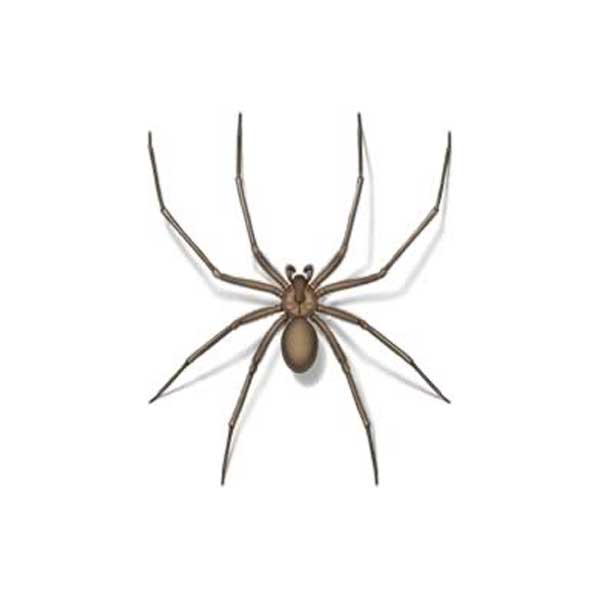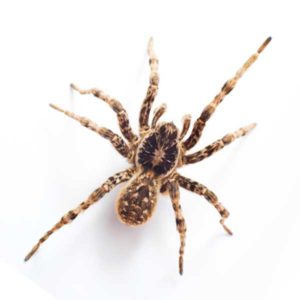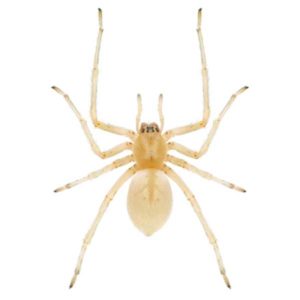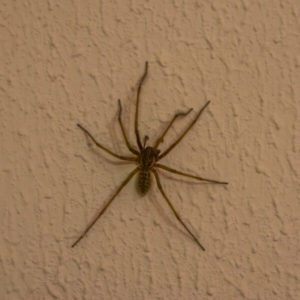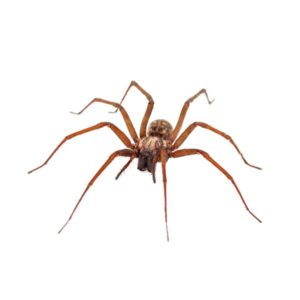Brown Recluse Spider Identification
Are Brown Recluse Spiders in North Carolina?
Yes, brown recluse spiders can be found in North Carolina, but they are not a common species to the area. They are more prevalent in the central United States. Brown recluse spiders typically inhabit undisturbed areas like storage rooms, basements, and attics. It’s important for residents to be aware of their potential presence, though encounters are infrequent. Identification and prevention are key in areas where these spiders may be found. In general, these spiders are widely over-reported and less common than perceived.
What Do Brown Recluse Spiders Look Like?
Brown recluse spiders, also known as ‘violin’ or ‘fiddleback’ spiders, are typically light to dark brown, with a characteristic dark brown or black violin-shaped marking on its dorsum. They are relatively small, about the size of a quarter, including their legs. Unlike most spiders, they have six eyes arranged in pairs, which is a key identification feature.
Signs of a Brown Recluse Spider Infestation
In nature, brown recluses are found in cracks and crevices in and under rocks or the loose bark of dead trees. Recluse spiders prefer to squeeze themselves into tight spaces and are found more commonly on rough surfaces such as paper, wood, and cardboard rather than smooth surfaces such as ceramic and metal. Brown recluse spiders benefit from human-altered environments, where they are readily found under trash cans, plywood, tarps, rubber tires, and storage boxes.
Habitat, Diet, Life Cycle & Bites
Where Do Brown Recluse Spiders Live?
Brown recluse spiders prefer dark, secluded areas. Indoors, they can be found in closets, attics, basements, and behind furniture. Outdoors, they reside in piles of rocks, leaves, and wood. They are most active at night when they hunt.
Diet of a Brown Recluse Spider
Their diet primarily consists of small insects such as cockroaches, crickets, and silverfish. Brown recluse spiders are hunters and do not rely on webs to catch their prey.
Life Cycle a Brown Recluse Spider
Brown recluse spiders have a unique egg-laying process, where females lay eggs from May to July. The spiderlings undergo several molts before reaching maturity, a process that can take about a year. Adult brown recluse spiders can live up to two years.
Brown Recluse Spider Bites
The venom component of all recluse spiders is capable of causing necrotic skin damage. Fortunately, brown recluse spider bites are rare and only occur when the spider feels directly threatened.
However if bitten it can develop into a painful sore with severe symptoms like fever, chills, nausea, and joint pain. If you or someone you know may have experienced a brown recluse bite, it is important to always seek medical attention.
Are Brown Recluse Spiders Dangerous?
While brown recluse spiders are venomous, they are generally non-aggressive and bite only when threatened.
How to Get Rid of Brown Recluse Spiders?
Eliminating brown recluse spiders involves cleaning and decluttering areas where they may hide. Sticky traps can be effective for monitoring and controlling spider populations. For extensive infestations, professional extermination is recommended.
Brown Recluse Spider Prevention Tips
Preventive measures include keeping areas clean and clutter-free, sealing cracks and openings in the home, and using sticky traps. Regular inspections of seldom-used spaces like basements and attics can help detect an infestation early.
Need help with Brown Recluse Spiders control?
FAQs
What Should I Do If I Find a Brown Recluse Spider?
Avoid contact with the spider. If you find one in your home, it’s best to contact our highly trained team to come and safely remove the spider and help prevent future infestations.
What Are the Symptoms of a Brown Recluse Spider Bite?
Symptoms include a mild sting followed by severe pain, fever, chills, body aches, and a blister or ulcer at the bite site. Seek medical attention immediately if bitten.
Should I Be Worried if I See a Brown Recluse Spider in My House?
Yes, it’s a concern because brown recluse spiders can deliver a venomous bite. It’s important to be cautious and consider professional spider extermination.
What Will Happen If You Get Bitten by a Brown Recluse Spider?
A brown recluse spider bite can cause a severe reaction, including skin damage and necrosis. Medical attention should be sought immediately if bitten.
How Can You Tell If a Spider is a Brown Recluse Spider?
Identify a brown recluse by its uniform brown color, violin-shaped mark on its back, and its six eyes arranged in pairs.
What Spider is Confused With the Brown Recluse Spider?
The brown recluse spider is often confused with other brown spiders, like the woodlouse spider or cellar spider, due to similar coloring.

